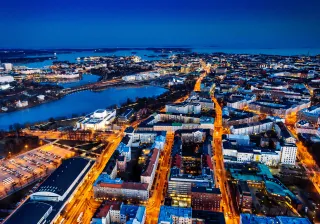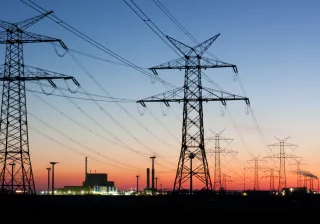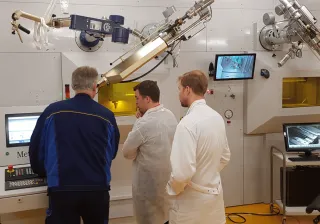VTT launched the Finnish development of a Small Modular Reactor (SMR) intended for district heat production. The first phase of the project will involve the conceptual design of a nuclear power plant suited for the heating networks of Finnish cities. The objective of the project is to create a new Finnish industrial sector around the technology that would be capable of manufacturing most of the components needed for the plant. Designing the district heating reactor will require expertise from a wide range of Finnish organisations.
New innovations needed to guarantee fossil-free heat production in cities
Nuclear energy is the single largest source of electricity in Finland, currently covering about one third of the domestic production. The greenhouse gas emissions from nuclear power production can be compared to energy sources such as wind power. Even though the carbon footprint of power production is small in Finland, achieving carbon neutrality also requires major emission reductions in other fields of energy industry. SMRs are suited for expanding the application of low-emission nuclear energy to heat production.
In 2019, the emissions from district heat production alone were more than four million tonnes of carbon dioxide. Decarbonizing the heat production system is one of the most significant climate challenges faced by many cities. Finland has decided to phase out of coal in energy production by 2029.
“The schedule is challenging, and the low-cost alternatives are few. To reach the target, new innovations and introduction of new technologies are required. Nuclear district heating could provide major emission reductions,” says Ville Tulkki, Research Team Leader at VTT.
Economic solution for heating Finnish homes
Internationally, many SMR projects have advanced to the licencing phase, but most of them are intended for power production or as energy sources for high-temperature industrial processes. District heating, requiring a water temperature of about 100 degrees, enables the use of simplified and more economic solutions. VTT aims to develop a plant tailored for producing district heat. It would be a cost-effective solution for heating Finnish homes in cities and densely populated areas. District heating is also widely used in for example Central and Eastern Europe, which requires a low-emission energy source.
Many of the plans for replacing fossil fuels used for district heat production are largely based on bioenergy. However, in the future biomass may become a valuable raw material replacing oil in, for example, industry and production of transport fuels. Nuclear energy offers an alternative that liberates biomass from heat production to other uses.
VTT has a solid background as an expert of nuclear energy
In the development of the SMR, VTT will rely on in-house calculation tools and use its strong multidisciplinary competence.
“For example, in the modelling of the reactor core, we are able to apply high-fidelity numerical simulation methods that have become feasibly by the advances in high-performance parallel computing, ” says Jaakko Leppänen, Research Professor for Reactor safety at VTT.
The Serpent software developed by Leppänen is applied for reactor modelling and applications related to radiation transport in 250 universities and research organisation in 44 countries.
VTT has about 200 research scientists working with nuclear energy and related applications. For the last five years, VTT has been continuously involved in projects examining the opportunities and introduction of SMRs. At the European level, VTT is coordinating the ELSMOR (towards European Licencing of Small MOdular Reactors) project, launched last year. In addition, VTT is leading one of the work packages of the new McSAFER project, which is developing next generation calculation tools for the modelling of SMR physics.







